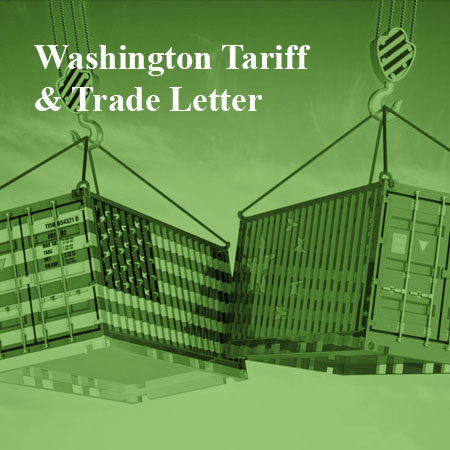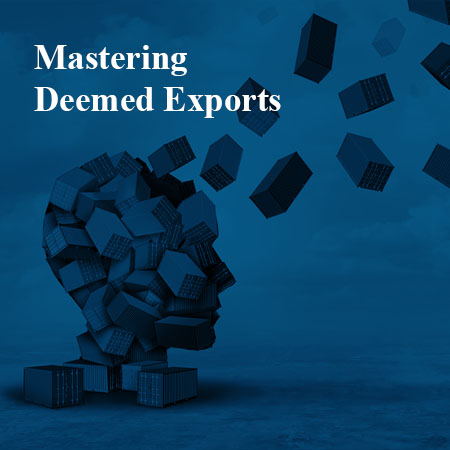Export Compliance Program Third Element: Export Authorization
July 13, 2021
(The Exporting Source)
by Blake Gill *
Hello again! Last time we discussed how important a risk
assessment is when building an Export Compliance Program (ECP). The results
for the assessment will be a determining factor in the steps your organization
must take to gain authorization for an export. If your organization has many
items that are controlled by the Commerce Control List (CCL), then the Export
Authorization section of your ECP may be the largest section. Even if your
organization does not have an extensive list of controlled items, this section
will still be one of the most important to ensuring your company operates in a
compliant manner.
The goal of the Export Authorization element is to build procedures,
processes, flows and decision guides to help employees make correct and
consistent decisions. The decisions will help determine jurisdiction,
classification, license determination and screening. With each of these parts
you will look to answer a few main questions: What agency has jurisdiction over
your item? What is the correct classification of the item? How does the
organization determine if a license is needed?
For determining jurisdiction, one will look at the capability of the
items and the end use. If an item is developed for a military end use it will
likely be controlled by State’s International Traffic in Arms Regulations (
ITAR). If an item is low-level technology and mainly used in commercial
applications, it is likely controlled by Commerce’s Export Administration
Regulations (EAR). Since each set of regulations has independent classification
procedures, determining the jurisdiction is always the first step to getting a
classification. Remember to never make any assumption of an item without doing
a proper jurisdiction determination so that you get an accurate classification.
If your team is unsure of the jurisdiction, the help of a consultant or attorney
may be beneficial. As a last resort effort, a jurisdiction determination
request can be submitted to the government for review and a legally binding
determination.
Once the jurisdiction has been determined, the proper classification can
be determined using item-specific technical specifications. Collaboration
between the compliance team and the departments that are responsible for having
a deep understanding of the technical specifications will be critical to
determining the correct classification using the descriptions within the
regulations. If your team is not able to confidently classify an item, the
assistance of a consultant or attorney can be used to help with the
determination. If the team is not able to self-classify the product, a request
for a formal classification from Commerce’s Bureau of Industry and Security
(BIS) can be made.
With the proper classification, the team can determine if a license is
required. The classification from the CCL, in conjunction with the EAR country
chart, will dictate if a license is required for the transaction or if an
exemption is allowed.
Lastly, appropriate screening of all parties involved in the transaction
must happen to ensure no parties involved are on any U.S. proscribed parties
lists prior to export. This screening must occur with every transaction that
occurs within the organization regardless of if a license is needed or the
jurisdiction. There are several considerations for your organization on
screening, such as when to complete screening, if the organization should
implement software to screen or manually screen, how often to screen customers,
and auditing the screening function.
The element of determining export authorization is an intensive process
that requires many different inputs from different functions in an organization.
This results in many potential failure points, and a failure within this
element can have devastating impacts for the organization. The utilization of
external resources, such as consultants or attorneys, in this element is often
in a company’s best interest to maintain profitable business activities.
* Blake Gill is an experienced International Trade Compliance professional with a demonstrated history of work in the technology industry. He has many years of experience working with export control, customer screening and item classification over a wide variety of products. Additionally, Blake has performed the duties of Empowered Official at multiple international companies.
Welcome to the Exporting Source
Your one-stop resource for finding help to export to new customers, to learn about government export programs, to join export-promoting trade missions, to sign up for trade conferences and training, and to link to other exporting services. Whether you're an old hand at exporting or just getting started, the Exporting Source provides a place to locate foreign customers, export financing and foreign investment assistance.

The Export Practitioner
Providing readers with expert reports on changes to U.S. export licensing rules, enforcement policies and regulations for defense and dual-use products and technology.

Washington Tariff & Trade Letter
Providing exclusive, behind-the-scenes news and analysis every week of U.S. trade policies, regulations and legislation, export controls, trade sanctions, and enforcement of antidumping and countervailing duty laws.

Mastering Deemed Exports
An invaluable video training tool that helps exporters, universities and research laboratories alert all employees to the potential fines and legal sanctions that can come from violating EAR and ITAR restrictions on giving certain foreign nationals access to controlled U.S. technology.